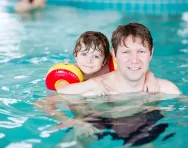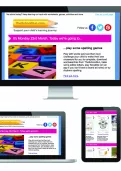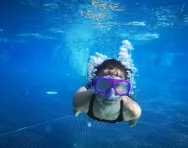Important update from TheSchoolRun
For the past 13 years, TheSchoolRun has been run by a small team of mums working from home, dedicated to providing quality educational resources to primary school parents. Unfortunately, rising supplier costs and falling revenue have made it impossible for us to continue operating, and we’ve had to make the difficult decision to close. The good news: We’ve arranged for another educational provider to take over many of our resources. These will be hosted on a new portal, where the content will be updated and expanded to support your child’s learning.
What this means for subscribers:
- Your subscription is still active, and for now, you can keep using the website as normal — just log in with your usual details to access all our articles and resources*.
- In a few months, all resources will move to the new portal. You’ll continue to have access there until your subscription ends. We’ll send you full details nearer the time.
- As a thank you for your support, we’ll also be sending you 16 primary school eBooks (worth £108.84) to download and keep.
A few changes to be aware of:
- The Learning Journey weekly email has ended, but your child’s plan will still be updated on your dashboard each Monday. Just log in to see the recommended worksheets.
- The 11+ weekly emails have now ended. We sent you all the remaining emails in the series at the end of March — please check your inbox (and spam folder) if you haven’t seen them. You can also follow the full programme here: 11+ Learning Journey.
If you have any questions, please contact us at [email protected]. Thank you for being part of our journey it’s been a privilege to support your family’s learning.
*If you need to reset your password, it will still work as usual. Please check your spam folder if the reset email doesn’t appear in your inbox.
11 ways to teach your child water confidence

Swimming is an important life skill for children. Drowning is the third most common cause of accidental deaths amongst kids, but despite the fact that the National Curriculum requires children to learn to swim 25 metres by the time they leave primary school, over 1,000 schools don't offer any swimming lessons at all.
According to the Amateur Swimming Association (ASA), children need at least 25 hours in the water to give them a reasonable chance of learning to swim, so whether or not your child is having lessons at school, taking them to the pool regularly will do wonders for their confidence in the water. Swimming is also one of the few sports that are accessible for children with additional needs, and once they’ve learnt how to swim, your child is likely to remember how do it for the rest of their life.


Boost your child's maths & English skills!
- Follow a weekly programme
- Maths & English resources
- Keeps your child's learning on track
Here's how to build your child's water confidence and make sure they get the most out of swimming lessons.
1. Be water-confident yourself
If you spend your time in the pool fussing about getting your hair wet and shrieking if you get splashed, you'll simply be teaching your child that it's normal to be nervous about swimming. It's important to show them that you're comfortable in the water – or at least appear to be! Get your goggles on, tie your hair back and be prepared to get wet. If you’re a bit wobbly, stay in the shallow end, but don’t underestimate how much confidence your child will gain by seeing you enjoy the water.
2. Stay safe
When you're teaching a young child or a non-swimmer to be comfortable in the water, always stay in the shallow end. Find out if there’s a shallow pool in your area; some leisure pools have a beach-like shallow end that's just a few centimetres deep – perfect for nervous youngsters. Others have a variable floor, which is raised for family sessions so the water is shallower. Never try to teach a non-swimming child to swim in the sea or open water.
More than 400 people accidently drown in the UK and Ireland every year and many more suffer life-changing injuries. Learn how to keep your family safe with the Royal Life Saving Society UK's water safety advice.
3. Make it fun
Games such as What’s the time Mr Wolf? and I Spy will get your child moving. Bring along some pool toys to splash about with, or their favourite bath toys to splash about with – Barbie and Action Man are waterproof!
4. Sing while you swim
Sings songs to help your child feel relaxed in the pool and get them used to the water. Have a go at the Hokey Cokey, Ring-a-ring o’ Roses, If You’re Happy and You Know It and Round the Mulberry Bush. Do the actions together such as blowing bubbles, gently splashing, trickling water and washing their hair and face.
5. Take it slowly
If your child hates putting their face under, teach them to hold their breath and put only their mouth in the water at first. Then move on so they're putiing their mouth and nose under; do it with them and hold hands so they can see your eyes and hair aren’t getting wet. Goggles might help them feel more confident about putting their face in the water, and can help them develop their aquatic breathing skills (and they'll love the novelty of being able to see underwater) – although bear in mind that eventually they need to be able to swim without goggles, too, and some swimming teachers don't allow children to wear them.
6. Teach them to float
Floating is a key skill that could save your child's life if they fell into water, so it's important to teach them how to do it. Support your child on their back and sing a song such as Twinkle Twinkle Little Star for reassurance. Now try on their front. Eventually they will be able to do it on their own and can try stretching their arms and legs into a star shape, and curling up into a tuck position.
7. Encourage arm movement
Walk through the water together, practising the arm actions for breaststroke and front crawl.
8. Try kicking
Use the side for support, with your child holding the trough or rail and lifting their legs up. Hold them under their tummy at first; you’ll know they’re feeling comfortable when they stretch out into a flatter position.
9. Use a flotation device
Although your goal is for your child to swim without aids, armbands and other flotation devices are brilliant for confidence. Buoyancy vests, arm discs, arm bands, woggles and floats are good to try out – always check they are British Standard-approved, and never use rubber rings for non-swimmers. Make sure your child spends time in the water without aids as well, otherwise they might begin to rely on them too much and find it difficult to learn to swim on their own. The ASA doesn't specify which type of buoyancy aid is best for children, but if your child is also doing swimming lessons (or will be in the future), it's worth asking their teacher what they'd prefer you to use.
10. Make it routine
Go to the pool regularly with your child, even during the winter. It might be chilly outside, but the water will be warm and the pool is likely to be less crowded than in the summer. Like anything, improvement will happen much quicker if your child keeps practising.
11. Sign up for swimming lessons
If you can afford it, consider taking your child to swimming lessons in addition to going swimming as a family. Look for lessons run by an ASA-qualified teacher, with no more than 12 children in the class. For beginners' classes, the teacher will usually be in the water with the children, and teaching will be through a games-based approach, introducing strokes and techniques gradually. It's worth keeping up with swimming lessons even if your child is also going swimming with school: the ASA says this is the ideal approach to helping kids learn to swim, and as well as learning a life-saving skill, your child will be developing a healthy habit that could last a lifetime.
You can use the ASA's Poolfinder to find a pool in your area that offers approved swimming lessons for your child's age and stage.








